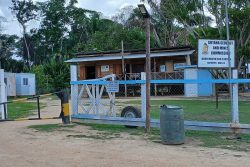Dear Editor,
All cultural and religious practitioners in Guyana and its diaspora should be aware that Guyanese culture is today what Jamaican, Cuban and Haitian culture was in the 1940s and 1950s: source material for anthropologists, sociologists, film-makers and journalists. Some of these observers are respectful of Guyanese culture while others are not, and this includes foreigners as well as a new breed of “native informers” who write for US audiences. Because of this there are certain cautionary practices that should be considered.
First, on other islands where religions are filmed, the practitioners always ask the producers to stop the cameras at the moment of trance or possession, and many Caribbean filmmakers have adopted this practice. For example, in the film Oggun by Cuban film-maker Gloria Rolando, the moment of possession is blacked out on the screen as a sign of deference. Today this is standard practice in films on Caribbean religions. But just last week I was astonished to see a film on Guyanese Mariamman worship in Queens that depicted two individuals under trance. It seemed as if these individuals did not know that this moment of intimacy was being filmed. All Guyanese religious practitioners, especially those involved in Comfa, Watermama, Kali and Mariamman worship should insist that the cameras be stopped at the moment of trance or possession as a gesture of respect.
Secondly, there are many Guyanese who have published in local journals, pamphlets, tracts and newspapers. There are also writers whose unpublished works are in circulation. These writers should be vigilant about their research being used without permission. For example, I recently wrote an article on Indo-Caribbean jewellery that contained interpretations of colonial postcards that depicted Indo-Caribbean women. My work on these postcards was plagiarised. The plagiarist obviously assumed that because my article was in a Caribbean journal that no one in the US would know or care about the plagiarism. Since Guyanese culture is now under the gaze of the US, and articles explaining aspects of music, politics and cuisine are popular, Guyanese writers should be careful that their work is not being paraphrased or reproduced in any way without proper citation. This applies to both published and unpublished works in circulation.
Third, as sociologists, anthropologists and journalists descend upon Guyana, ordinary Guyanese who are interviewed should be aware that their names and words are being repeated in articles and books. It is necessary to consider what knowledge is disclosed and how it is being used. While Guyana is a complex place, there are many disparaging and simplistic representations that are currently being disseminated in the US today by foreigners and native informers alike.
Yours faithfully,
Joy Mahabir
State University of New York








